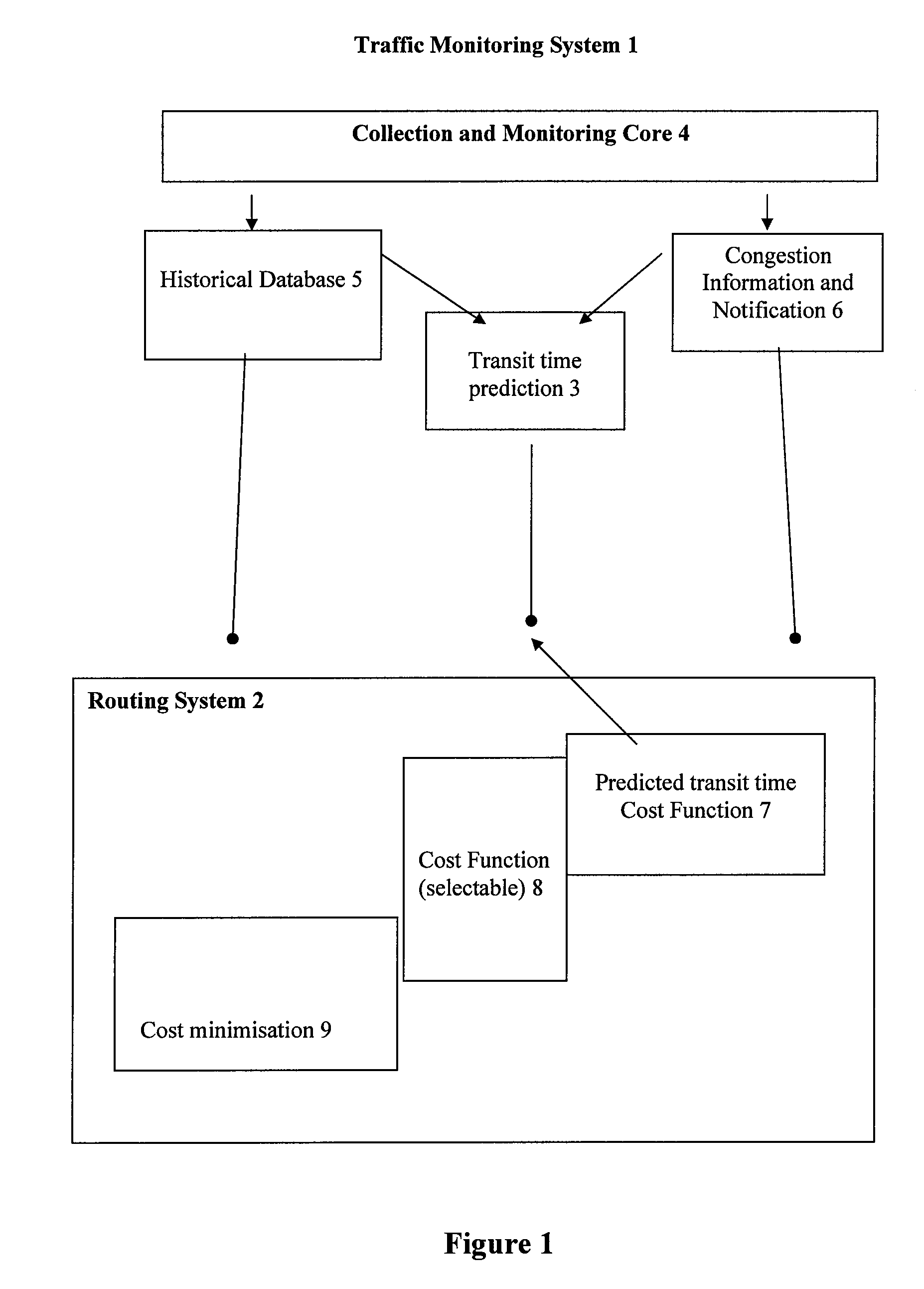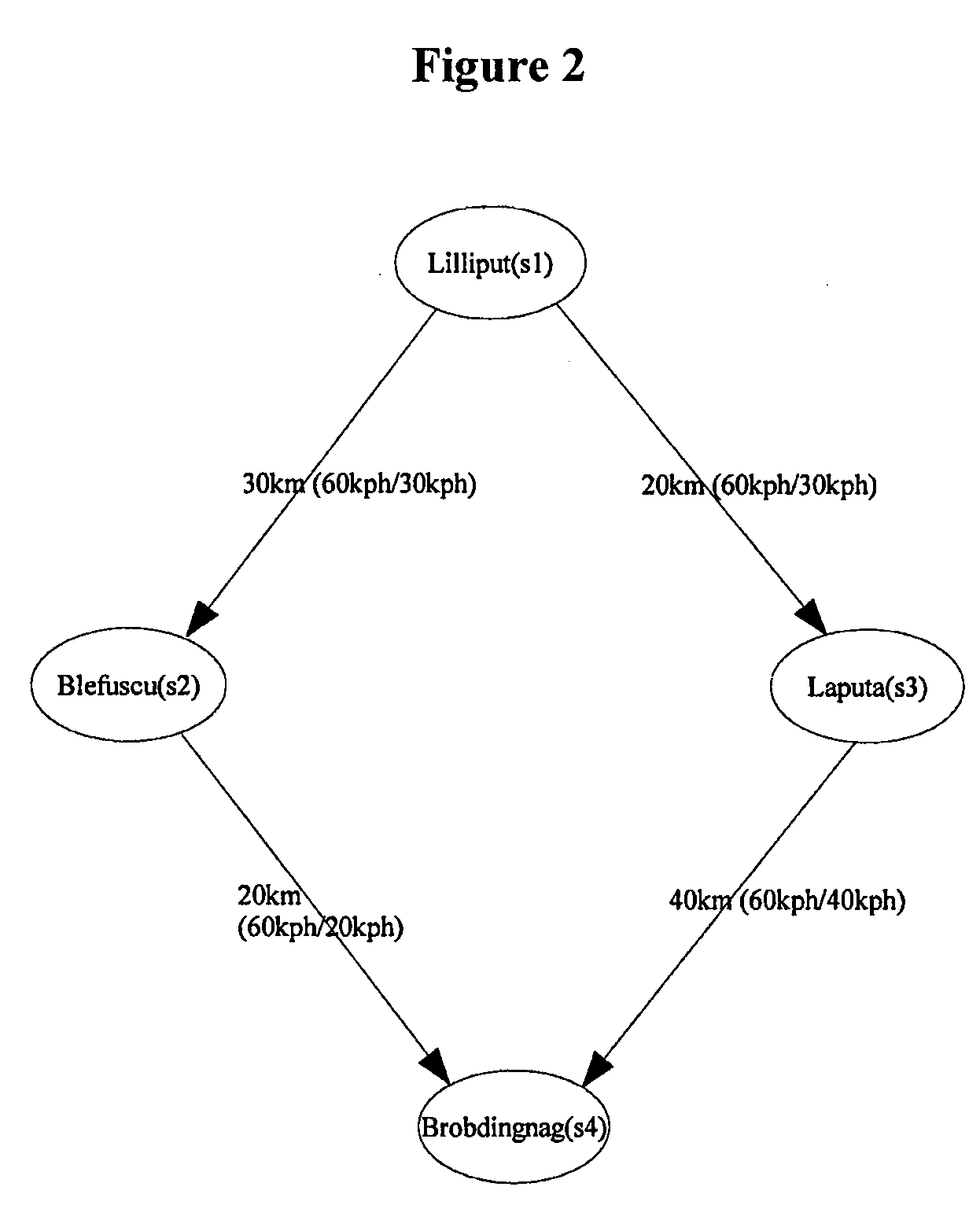Method of planning a route to a destination
a route planning and destination technology, applied in surveying and navigation, instruments, navigation instruments, etc., can solve the problems of traffic delays, traffic jams, and system providing route planning becoming more susceptible to errors, and achieve the effect of time of arrival at each destination
- Summary
- Abstract
- Description
- Claims
- Application Information
AI Technical Summary
Benefits of technology
Problems solved by technology
Method used
Image
Examples
Embodiment Construction
[0058] Various facilities exist for proposing a route on a road network to a driver who wishes to make a specific journey. The journey may be simply specified as between two points, or may be a more complex journey involving multiple locations which must be visited, not necessarily in a particular order. This is the kind of journey that a delivery driver would make. Whatever the form of the journey, the aim is to minimize a cost associated with the journey. The most obvious cost is the time duration, but any other cost may be relevant, for example the fuel used in making the journey. Users can restrict the choice of roads used, for instance some classes of commercial vehicles are prohibited from using all routes except Trunk routes when outside conurbations. These facilities are most usually embodied as computer systems encapsulating algorithms which assign a cost to a section of route, and which apply a cost minimization algorithm [Dijkstra] to the graph of junctions and routes. In...
PUM
 Login to View More
Login to View More Abstract
Description
Claims
Application Information
 Login to View More
Login to View More - R&D
- Intellectual Property
- Life Sciences
- Materials
- Tech Scout
- Unparalleled Data Quality
- Higher Quality Content
- 60% Fewer Hallucinations
Browse by: Latest US Patents, China's latest patents, Technical Efficacy Thesaurus, Application Domain, Technology Topic, Popular Technical Reports.
© 2025 PatSnap. All rights reserved.Legal|Privacy policy|Modern Slavery Act Transparency Statement|Sitemap|About US| Contact US: help@patsnap.com



